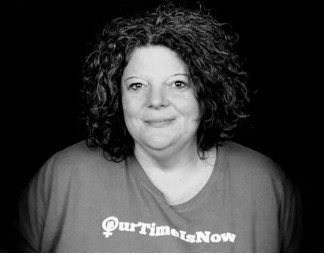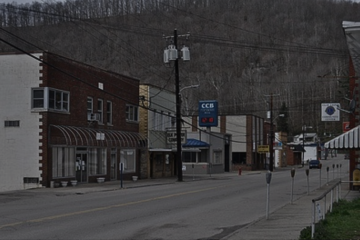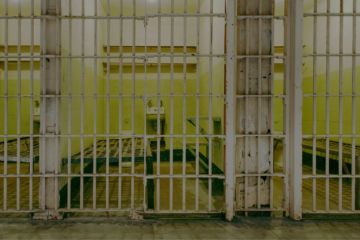When her 14-year-old daughter needed emergency mental health services last year, Amy Jo Hutchison went to the emergency room in Wheeling.
Her daughter was struggling with suicide ideation, an ongoing issue that had become worse during the coronavirus pandemic.
Despite the urgent need, Hutchison said her daughter didn’t receive prompt care.
Instead, she spent 17 hours in the emergency room – the majority of it in the waiting room – as other patients experienced their own emergencies in front of her daughter’s eyes.
“It was like something out of a horror movie,” Hutchison, 50, recalled.
Parents and guardians in West Virginia, like Hutchison, turn to emergency rooms for child mental health care due to a lack of mental health providers around the rural state. Parents across the country do the same; nationwide, the Centers for Disease Control and Prevention in 2020 reported a 31 percent increase in kids going to emergency rooms for mental health emergencies compared to the previous year. Wait times have increased, leaving kids in distress for longer.
Right now, it’s unclear how many kids in West Virginia are struggling to find urgent mental health support and how long they wait for care in emergency rooms, because the state does not compile and report comprehensive emergency room data. Other states, like Virginia, do report that data, and some child advocates say the information is key to figuring out how to best address kids’ mental health needs both through legislation (with potential money and policy changes) and within communities. Child mental health has been largely absent from the state legislature’s discussions despite lawmakers’ recent focus on education and child welfare.
Dr. Shannon Smith, a pediatrician who practiced in Huntington from 2003 to 2020 and now runs her own company, said she regularly saw kids who were going to the emergency room for mental health support and didn’t get the help they needed.
“A lot of times, I saw us putting on bandaids,” Smith said. “It’s not the ER’s job, but that’s how we’ve set it up.”
In 2021, Hutchison again sought care for her daughter’s mental health; this time, she said they spent days waiting in a hospital before the state found her daughter a bed at a youth mental health facility in Huntington – three and a half hours from her home.

Kids’ mental health worsening
Amid the pandemic, more West Virginia kids are struggling with their mental health, according to the recent Kids Count Data Book from the Annie E. Casey Foundation.
Around 30 percent of kids in the state were diagnosed with at least one emotional, behavioral or developmental condition in 2019.
The state’s high poverty rate played a major role in mental health struggles, the report said. Additionally, the state has the highest percentage of kids entering the foster system, and children in the child welfare system are far more likely to experience mental health issues.
West Virginia was struggling to meet the needs of kids with mental health struggles prior to the pandemic. In 2015, the Department of Justice investigated the state for failing to provide adequate mental health services for kids with serious mental health issues, and federal investigators said the state relied too heavily on residential care facilities. The state reached an agreement with the DOJ in 2019 that required that the state develop a plan to eliminate the unnecessary use of residential mental treatment facilities for children and, in turn, develop community-based services. My reporting in 2021 showed the state had sent some foster kids to unsafe and abusive out-of-state group homes.
Offering a snapshot of the current rise in mental health emergencies, the West Virginia Poison Center has reported an increase in child suicide attempts by self-poisoning, according to Dr. Elizabeth Scharman, the center’s executive director. In 2021, she said there were 618 poisoning-related self-harm attempts in children aged 12 to 18.
While the data indicates an uptick in child mental health concerns, it doesn’t offer a full picture of what’s really going on, since the data is limited to self-poisoning and is mostly self-reported.
Scharman said child suicide attempts were rising long before the pandemic. In an effort to understand more about child mental health in West Virginia, Scharman said she previously sought the state’s emergency room data but has not had full access to it.
“I think when you look at the number of self-harm attempts, it shows the need for additional resources for adolescent mental health,” Scharman said, who has been with the poison control center for 30 years. “We really need to look at where our resource gaps are, and we hear stories about people who aren’t able to get help for mental health.”
Emergency rooms aren’t designed for pediatric mental health care, and nationally, only 16 percent of children who came to the emergency room for a mental health visit ever saw a mental health provider, according to research in the journal Pediatrics.
That same study said that nationwide, children who go to the emergency room for mental health concerns are more likely to be stuck there for extended stays than they were a decade ago.
West Virginia Department of Health and Human Resources spokeswoman Allison Adler said in an email that the department is not aware of any public emergency room data, which could shed light on kids’ mental health care.
Gov. Jim Justice announced in September that the state planned to build a Children’s Crisis Center in Elkins to offer a “safe alternative from the use of hospital emergency departments and hotel rooms to address the needs of children who may be experiencing a behavioral health crisis and have been removed from their homes.”
“In the past, West Virginia has not had the right kind of services in our state and kids had to leave to receive the care they need. That’s just not right; we need to provide services in our home state,” Justice said.
Project timeline
This series with Think Kids WV seeks to, first and foremost, gather emergency room data from hospitals on pediatric mental health visits.
If successful, I’ll share it publicly here and with people who can use the information to help our state tackle its child mental health crisis.
In an effort to get that data, I am contacting hospitals and when applicable using the Freedom of Information Act to request the information (allowing for redactions to protect child privacy).
I’ll share my efforts and outcomes in this series through the end of the year.
We’re looking to tell the stories of families who are in need of or have experienced adolescent mental health care in West Virginia. We’d also love to hear from school personnel and mental health services providers about kids’ mental health. Contact Amelia Ferrell Knisely at [email protected] or 304-208-1823.
If you need help
From parenting support to immediate crisis response, contact 1-844-HELP4WV to talk to a trained helpline specialist who can help you understand options and link you directly to treatment providers. The resource is available 24/7.
You can also get immediate help 24/7 from the National Suicide Prevention Lifeline at 1-800-273-8255.

Amelia Ferrell Knisely is an award-winning journalist in West Virginia. Originally from Rand, West Virginia, she has written for Mountain State Spotlight and the Charleston Gazette-Mail about child welfare, hunger and poverty. Ferrell Knisely also previously worked for The Tennessean in Nashville. Follow her on Twitter.



0 Comments